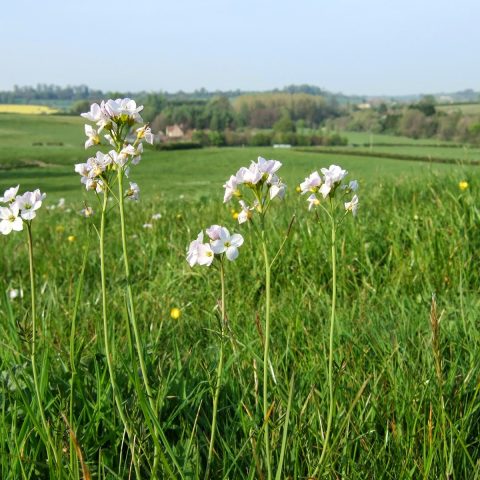Llandough Allotments Biodiversity Group's story
The allotments on Corbett Road in Llandough may have been part of the village for about 100 years, but they are now helping to future-proof greater levels of biodiversity for the community.
Tenants at the allotments have formed their own Biodiversity Group, supported by Llandough Community Council, to promote and monitor biodiversity on the site to ensure rich and diverse habitats are maintained.
Every aspect of the natural environment at the allotments is carefully monitored and maintained by the dedicated group, from varieties of fungi and pond life to insect and bird populations.
The group has installed bird feeders and 37 bird boxes across the allotment and monitors each box to ensure it is providing the right habitat for local birds including robins, wrens, starlings, and tawny owls.
As well as a bat box and a butterfly box, there are also 13 bee boxes across the site and the team is dedicated to providing a habitat that encourages and supports bumblebees, ensuring a diverse range of flowering plants are available for them.
The group organises 'Bee Walks' between March and October to monitor and record bee activity on the site, including numbers and the species, to allow for comparisons in the future. Bird watches and bat walks are also planned.
To maintain and monitor the site's biodiversity health, the group organises a regular 'Bio Blitz'. This is an essential tool allowing the group to monitor and observe trends in the variety of wildlife and plants. Using a combination of audio recordings, camera traps and direct observations, the Bio Blitz team can collect data about all species visiting or resident in the allotments.
Every plant, type of fungi, animal and insect is recorded so that the group can monitor activity levels in coming years and develop strategies that support the ecosystem and encourage even greater biodiversity.
The committed group of tenants were inspired by founder Roger Chandler, a long-term tenant who started putting bird boxes on his plot many years ago. Roger would report his activities and findings from the bird boxes at the allotment AGM and his enthusiasm and passion for promoting and protecting the natural environment soon saw a group of tenants come together to form the Biodiversity Group.
Now consisting of eight tenants, and working closely with Llandough Community Council, the group ensures the 61-plot allotment remains a vibrant and thriving hub for native plants and animals.
Useful learnings from Llandough Allotments Biodiversity Group
Promoting biodiversity in your community is a very rewarding project and I'd encourage everyone to get involved in it wherever they can. If you are a tenant on an allotment, as well as employing biodiversity initiatives on your own plot, try and seek out other like-minded tenants who could also support the cause in their plots.
I'd recommend engaging with your local community council or council for support too. They can often help with funding and grants for things like bird boxes or seeds, and they can raise awareness with other tenants to help build a group of supporters.
You should try to collaborate with other groups wherever you can. Pooling resources and expertise will help propel your project. We are looking forward to starting work with the Down to Earth Project, which will help to expand the woodland area we can use for our work and provide further health and well-being opportunities for the community.
You must be prepared to audit your initiatives, however. Monitoring and recording your work is the only way to successfully support biodiversity. It is not enough to just put up some bird boxes or plant some hedgerow. You must identify if the measures are working and the trends you are seeing to make them effective.
This also comes down to doing some research too. For example, bird boxes need specific locations to stop them becoming too hot, or feeling exposed or too noisy, so doing some homework around different biodiversity initiatives, or talking to others who have already successfully used them will help get better results.
Llandough Allotments Biodiversity Group's metrics
There are many ways to do this, from how many people join in; the amount of waste saved from landfill; species counted in a wildlife area; miles travelled on sustainable transport; energy produced with renewables, and more. Our audits provide us with the data we need to know if our strategies are successful. For example, every September we audit our bird boxes and keep records of our findings. The audits show us if the box has been successfully used and, if not, we can look at why that may be.







